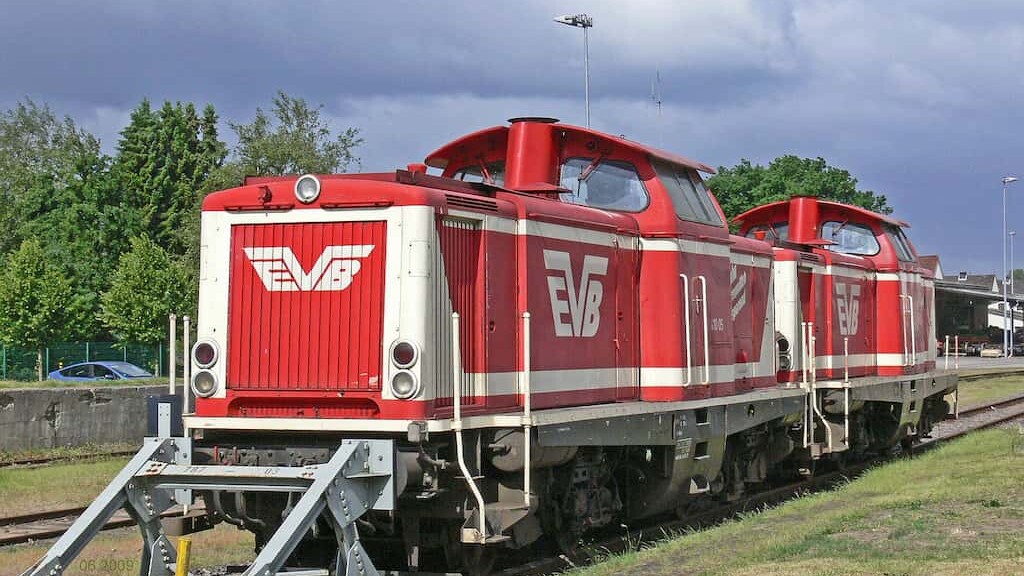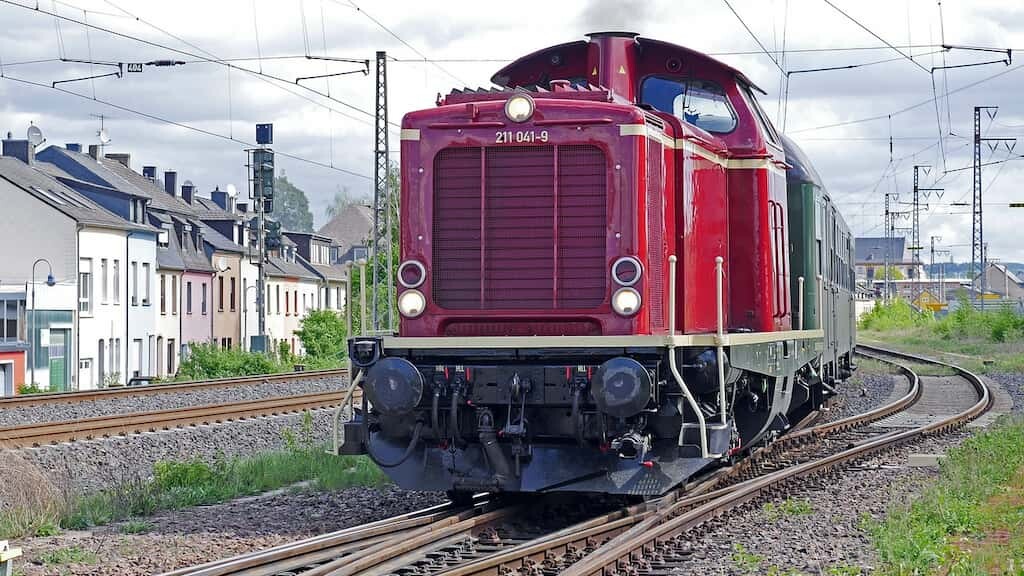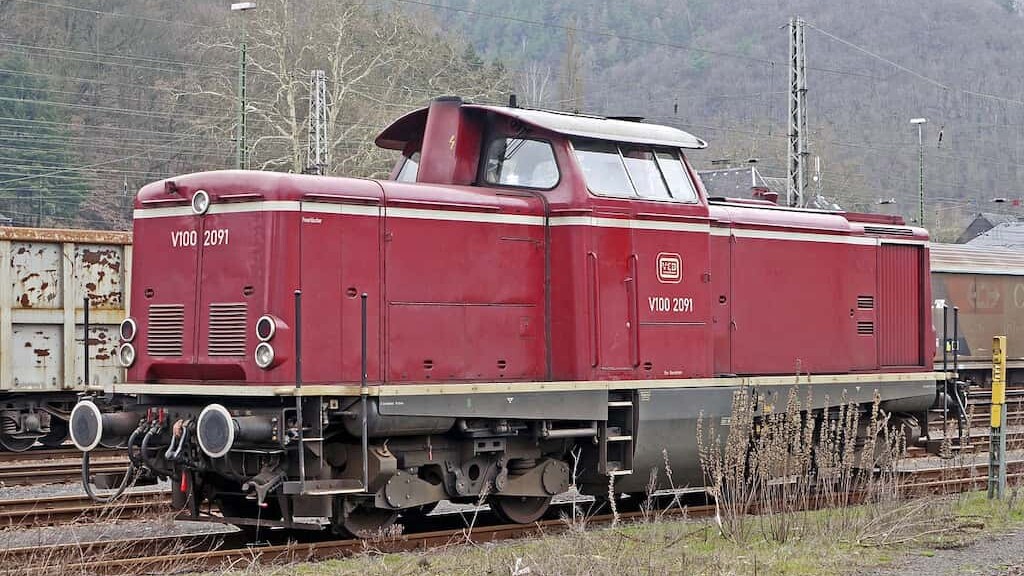DB Class V 100 - Locomotive with diesel-hydraulic drive
The diesel locomotive DB Class V 100 is a locomotive with a diesel-hydraulic drive. The class V 100 was put into service by Deutsche Bahn at the end of the 1950s and partially replaced the outdated steam locomotive series, which was replaced by electrified locomotives or diesel vehicles. The diesel locomotive Class V 100 was built between 1985 and 1963 by the company Maschinenbau Kiel (MaK).
The final withdrawal from service took place in 2004. The machines reach a peak performance of up to 100 km/h and a continuous output of 809 kW. The locomotives of the DB Class V 100 series were equipped with two bogies, each with two driven wheel sets. Twelve-cylinder engines in a V arrangement were used as drives, which were manufactured by the companies Maybach, Mercedes-Benz and MAN, among others.
Diesel locomotive BR V 100 - The technical features
A hydrodynamic transmission with two torque converters and a fluid coupling was installed to transmit power from the engine to the two wheel sets. On the locomotives intended for steep sections, however, a hydrodynamic brake was used instead of the fluid coupling with downstream mechanical two-speed and reversing transmission via cardan shafts to the individual wheelset transmissions in the bogies. The bogies have an H-shaped frame. These bogies have two longitudinal and two transverse beams. The locomotive frame, which is made of rolled steel sections, which are of welded construction, is supported on the bogies. Shock absorbers were arranged on both sides of the pivots to dampen the rotation of the bogies in relation to the locomotive frame.
Shorter and stronger cardan shafts were used for the V 100, because longer cardan shafts, as used for the V 80, were often damaged by torsion. A continuous cardan shaft drive was provided for this purpose. And this is how the drive works on the DB Class V 100. The respective inner wheelsets in the bogie are driven by a cardan shaft from the gearbox. The respective outer wheelsets in the bogie are driven by another cardan shaft, the one between the counter gear of the inner wheelset and its own counter gear. The stems are not accessible and are narrower. On the V 80 they were still accessible.
An electro-pneumatic control system for the engine was developed for the DB Class V 100. Five solenoid valves were alternately energized via the master controller, which in a so-called 16-position device caused millimeter-by-millimeter advance of a control piston. This acted on the engine controller R32f from Maybach and thus determined the fuel injection quantity. This resulted in 15 driving steps. This had the advantage that the V 100 could be started up by utilizing the highest possible adhesion value. In addition, there was a further acceleration stage “B” at the speed switch, which corresponded to speed stage 17 and enabled the control piston to be advanced by a further 2 mm by feeding a solenoid valve not required in speed stage 15.
Furthermore, speed stage B enabled the 1100 HP motor to be overloaded up to about 1250 HP. This had the disadvantage that the wear and tear was increased too much and that speed stage B was later mechanically blocked at the speed switch. The anti-skid protection was also applied to the magnetic valves. So the power could be reduced by up to 8 speed steps during skidding. Many V 100 were reversible and double traction capable via a 36-pole control cable. This had the advantage that mixed double traction was run with the series 211 to 218, because of the unified locomotive control.
The non-load-bearing locomotive superstructures consist of the centrally arranged driver’s cab and the two differently long front ends. The main diesel engine and the auxiliary diesel engine are located under the longer front end. The auxiliary diesel engine is used for battery charging and for power supply when the main diesel engine is not running. The radiator system is also located in the longer stem. In the shorter front end are the boiler, the compressor and the light starting machine.
DB Class V 100.10
The DB Class V 100.10 series was to be used in light passenger and freight trains. This locomotive type was developed in 1956 in cooperation with the Bundesbahn Central Office in Munich and the MaK for the German Railways.
DB Class V 100.20
The DB Class V 100.20 or 212 series represents a more powerful version of the V 100. After the prototype V 100 006 it was put into series production from 1962 on and was also used in main and steep track service.



